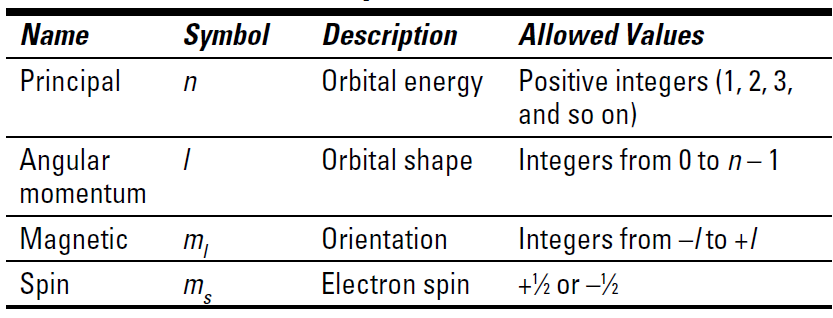
The quantum mechanical model
 المؤلف:
John T. Moore, EdD
المؤلف:
John T. Moore, EdD
 المصدر:
Chemistry Essentials For Dummies
المصدر:
Chemistry Essentials For Dummies
 الجزء والصفحة:
P21
الجزء والصفحة:
P21
 26-12-2016
26-12-2016
 1822
1822
The quantum mechanical model
Early models of the atom had electrons going around the nucleus in a random fashion. But as scientists discovered more about the atom, they found that this representation probably wasn’t accurate. Today, scientists use the quantum mechanical model, a highly mathematical model, to represent the structure of the atom.
This model is based on quantum theory, which says that matter also has properties associated with waves. According to quantum theory, it’s impossible to know an electron’s exact position and momentum (speed and direction, multiplied by mass) at the same time. This is known as the uncertainty principle. So scientists had to develop the concept of orbitals (sometimes called electron clouds), volumes of space in which an electron is likely present. In other words, certainty was replaced with probability.
The quantum mechanical model of the atom uses complex shapes of orbitals. Without resorting to a lot of math (you’re welcome), this section shows you some aspects of this newest model of the atom. Scientists introduced four numbers, called quantum numbers, to describe the characteristics of electrons and their orbitals. You’ll notice that they were named by top-rate techno-geeks:
✓ Principal quantum number n
✓ Angular momentum quantum number l
✓ Magnetic quantum number ml
✓ Spin quantum number ms
Table 1-1 summarizes the four quantum numbers. When they’re all put together, theoretical chemists have a pretty good description of the characteristics of a particular electron.
Table 1-1 Summary of the Quantum Numbers

 الاكثر قراءة في مقالات متنوعة في علم الكيمياء
الاكثر قراءة في مقالات متنوعة في علم الكيمياء
 اخر الاخبار
اخر الاخبار
اخبار العتبة العباسية المقدسة


